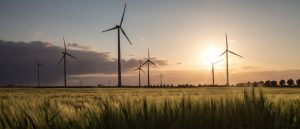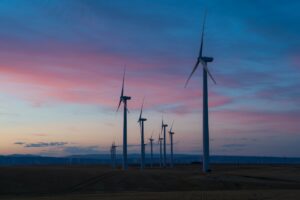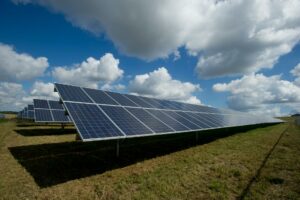Alberta 
Restructured energy market design ‘disincentivizing’ renewables in southeast Alberta
 Recent changes to Alberta’s energy grid, introduced under the new Restructured Energy Market (REM), are expected to disproportionately harm renewable energy projects in the Medicine Hat region. Transmission costs shifted to developers: The province has scrapped its former zero-congestion transmission policy, which required transmission companies to build power lines for new projects. Now, renewable developers must pay for their own transmission infrastructure, discouraging projects in congested areas like Medicine Hat. Grid congestion already delaying projects: Projects have faced delays or sought extensions due to transmission congestion and uncertainty surrounding the REM. Localized Marginal Pricing (LMP): A new pricing system will set power prices by region. Medicine Hat is expected to have the lowest electricity prices in Alberta, potentially reducing renewable revenues by over 25% by 2029. Analysts warn that this could lead some projects to be cancelled entirely, putting $11.5 billion in renewable investments since 2020 at risk. Added costs for renewables: Under the REM, generators responsible for power supply uncertainty must cover costs for backup generation. This particularly impacts intermittent sources like wind and solar, further reducing profitability. Investor skepticism:
Recent changes to Alberta’s energy grid, introduced under the new Restructured Energy Market (REM), are expected to disproportionately harm renewable energy projects in the Medicine Hat region. Transmission costs shifted to developers: The province has scrapped its former zero-congestion transmission policy, which required transmission companies to build power lines for new projects. Now, renewable developers must pay for their own transmission infrastructure, discouraging projects in congested areas like Medicine Hat. Grid congestion already delaying projects: Projects have faced delays or sought extensions due to transmission congestion and uncertainty surrounding the REM. Localized Marginal Pricing (LMP): A new pricing system will set power prices by region. Medicine Hat is expected to have the lowest electricity prices in Alberta, potentially reducing renewable revenues by over 25% by 2029. Analysts warn that this could lead some projects to be cancelled entirely, putting $11.5 billion in renewable investments since 2020 at risk. Added costs for renewables: Under the REM, generators responsible for power supply uncertainty must cover costs for backup generation. This particularly impacts intermittent sources like wind and solar, further reducing profitability. Investor skepticism:
A report commissioned by the Alberta Electric System Operator (AESO) found that major financial institutions view the changes as disincentivizing renewable investment in Alberta.
The REM’s new rules—intended to manage grid congestion and pricing—may unintentionally undermine Alberta’s renewable energy expansion, particularly in southeast Alberta, by raising costs, lowering revenue potential, and driving investor uncertainty. Source: Medicine Hat News
Electricity Prices for Alberta
The Alberta power pool price averaged 3.288 cents per kWh in October 2025. This price is 4.017 cents lower than last month’s average of 7.305 cents. The pool price has averaged 4.395 cents per kWh over the last 12 months.
As of November 1, 2025, the forward market was predicting electricity prices for the calendar years of 2025, 2026, 2027, 2028, 2029, 2030, and 2031. These prices are 5.744, 5.219, 6.100, 8.000, 8.375, 8.675, and 8.675 cents per kWh respectively.
Gas Prices for Alberta
Direct Energy’s gas rate for October 2025 was $1.429 per GJ in Alberta. The November 2025 rate has been set at $2.579 per GJ. Alberta gas prices have averaged $1.812 per GJ over the last 12 months.
As of November 1, 2025, the forward market was predicting gas prices for the calendar years of 2025, 2026, 2027, 2028, and 2029. These prices are 2.95, 3.13, 3.12, 3.07, and 3.02 cents per GJ respectively.
British Columbia 
New legislation powers economy with clean energy, North Coast Transmission Line
The Government of British Columbia has introduced a sweeping plan—through the Energy Statutes Amendment Act—to accelerate clean-energy infrastructure, stimulate industrial investment, and manage soaring electricity demand while keeping the province’s energy system public and sustainable. Build the North Coast Transmission Line (NCTL): Fast-track construction of a major transmission expansion from Prince George to Bob Quinn Lake, developed in partnership with First Nations. Expected impacts: 9,700 direct full-time jobs,
$10 billion in annual GDP once operational, $950 million per year in provincial and municipal revenues, prevention of 2–3 million tonnes of CO₂ annually. Prioritize clean electricity for strategic sectors – electricity allocation will focus on industries that: create significant jobs and revenue, contribute to decarbonization, such as mining, natural gas, LNG, and manufacturing. Framework for emerging sectors: establishes a process to manage power access for data centres, artificial intelligence (AI), and hydrogen production, ensuring projects provide broad economic benefits. The initiative aims to position B.C. as a clean-energy powerhouse, fueling economic growth while meeting climate goals. It links nation-building infrastructure and economic diversification with environmental responsibility, ensuring that new industrial and digital-economy projects develop sustainably and in partnership with Indigenous communities.
Source: Government of British Columbia
Ontario 
Ontario to Miss Emissions Reduction Goal By Even Wider Gap Than It Admits: Auditor
 Ontario’s Environment Ministry has acknowledged that the province will miss its 2030 greenhouse gas (GHG) emissions reduction target, but a new report from Auditor General Shelley Spence reveals the shortfall will likely be significantly worse than the government admits. The government projects a 3.5-megatonne gap from its 2030 target, but the auditor estimates the real gap is larger, citing overly optimistic assumptions and outdated data. To close the gap, Ontario would need to achieve reductions equivalent to removing half of all fossil-fuelled passenger vehicles from the roads within five years—a target the auditor calls unrealistic.
Ontario’s Environment Ministry has acknowledged that the province will miss its 2030 greenhouse gas (GHG) emissions reduction target, but a new report from Auditor General Shelley Spence reveals the shortfall will likely be significantly worse than the government admits. The government projects a 3.5-megatonne gap from its 2030 target, but the auditor estimates the real gap is larger, citing overly optimistic assumptions and outdated data. To close the gap, Ontario would need to achieve reductions equivalent to removing half of all fossil-fuelled passenger vehicles from the roads within five years—a target the auditor calls unrealistic.
The Environment Ministry’s internal analysis in January 2025 already concluded the target would be missed but did not make that information public. Ontario’s climate modelling overestimates emissions reductions from provincial programs and includes federal policies that no longer exist, such as the carbon tax and electric-vehicle rebates. It assumes progress on waste diversion goals despite “little to no progress” in reality. The analysis fails to account for pro-driving policies, such as gas-tax cuts and toll removals, which increase emissions. The province has not released a new climate progress report since 2021 and its 2018 climate plan remains unapproved, still in draft form. Ontario is failing to meet its legal requirements to maintain and publicly report a climate plan. Ontario is off-track to meet its 2030 climate target, lacks an updated or approved plan, and continues to emphasize affordability over ambition. The Auditor General’s report portrays a government that has downplayed its climate shortcomings, relies on outdated assumptions, and risks undermining long-term environmental progress. Source: The Energy Mix
Saskatchewan 
Government of Saskatchewan Announces $47.5 Million in New Industry Projects to Cut Emissions and Grow Saskatchewan’s Economy
 The Government of Saskatchewan has approved nine new industry-led projects under the second intake of the Saskatchewan Technology Fund, investing roughly $50 million to drive emissions reductions and industrial innovation across key sectors such as oil and gas, steel, ethanol, and potash. The Saskatchewan Technology Fund (Tech Fund) is part of the province’s “made-in-Saskatchewan” strategy to keep investment, jobs, and innovation local while lowering greenhouse gas (GHG) emissions. Funding is sourced from compliance payments made under Saskatchewan’s Output-Based Performance Standards (OBPS) for large industrial emitters (2021–2022 compliance years). Projects were chosen via a competitive review process assessed by independent technical and financial experts. Saskatchewan’s latest round of Technology Fund investments reinforces the province’s strategy of combining industrial competitiveness with emissions reduction through industry-led innovation. The projects highlight a pragmatic approach that leans on carbon capture and efficiency improvements rather than large-scale renewables, keeping Saskatchewan’s traditional resource industries central to its clean-energy transition. Source: Government of Saskatchewan
The Government of Saskatchewan has approved nine new industry-led projects under the second intake of the Saskatchewan Technology Fund, investing roughly $50 million to drive emissions reductions and industrial innovation across key sectors such as oil and gas, steel, ethanol, and potash. The Saskatchewan Technology Fund (Tech Fund) is part of the province’s “made-in-Saskatchewan” strategy to keep investment, jobs, and innovation local while lowering greenhouse gas (GHG) emissions. Funding is sourced from compliance payments made under Saskatchewan’s Output-Based Performance Standards (OBPS) for large industrial emitters (2021–2022 compliance years). Projects were chosen via a competitive review process assessed by independent technical and financial experts. Saskatchewan’s latest round of Technology Fund investments reinforces the province’s strategy of combining industrial competitiveness with emissions reduction through industry-led innovation. The projects highlight a pragmatic approach that leans on carbon capture and efficiency improvements rather than large-scale renewables, keeping Saskatchewan’s traditional resource industries central to its clean-energy transition. Source: Government of Saskatchewan
Manitoba 
Deep Sky to build 500,000 tonne carbon removal facility – one of the world’s largest – in Manitoba Canada
Deep Sky, a tech-agnostic carbon removal company, has announced plans to build Deep Sky Manitoba, one of the world’s largest carbon removal facilities. The project will be developed in multiple phases, with the first phase capturing 30,000 tonnes of CO₂ starting in 2026, eventually scaling to 500,000 tonnes per year. The total investment for the first phase exceeds $200 million, with the full project estimated at $500 million, creating construction, operational, and indirect jobs in the region. Southwestern Manitoba was chosen for its geology suitable for underground CO₂ storage and access to clean hydroelectric power to run the facility sustainably. The project has received support from the Dakota Grand Council, with collaborative agreements in place to explore investment and partnerships. The initiative positions Manitoba as a leader in carbon removal and climate technology, reinforcing Canada’s role in the growing global carbon removal industry projected to become a multi-trillion-dollar market. The project builds on lessons learned from Deep Sky’s first facility in Alberta (Deep Sky Alpha), which tests multiple direct air capture technologies. Manitoba’s government emphasized the project’s economic and environmental benefits, noting it strengthens the province’s climate leadership, advanced economy, and technological innovation. The facility is part of a broader national strategy to help countries and companies meet net-zero commitments by removing large quantities of CO₂ from the atmosphere. Source: Deep Sky
New Brunswick 
NB Power warns province at risk of electricity shortage in 3 years
NB Power has proposed a controversial natural gas-diesel plant in Tantramar, southeastern New Brunswick, with an estimated cost of over $1 billion, citing an imminent electricity shortage projected as early as 2028. The utility’s VP, Brad Coady, told legislators that rapid population growth and increased demand are straining the grid, and the new plant is intended to provide 400–500 MW of reliable backup power, especially during winter or low renewable output. The project would be built by American firm PROENERGY, which NB Power selected because it could deliver the project quickly. The terms of a proposed 25-year power purchase agreement remain confidential. NB Power rejected the alternative of large-scale battery storage, citing high costs and limited backup duration. The plan has drawn political opposition. Green MLA Megan Mitton criticized the project for increasing greenhouse gas emissions, potential environmental harm, and misleading claims about First Nations equity participation. She advocates for battery storage as a cleaner alternative. NB Power argues that the region’s climate and energy needs require dispatchable generation, not batteries. The debate highlights tensions between reliability, cost, and climate goals, with NB Power facing scrutiny over rising electricity rates, a nearly $6-billion debt, and the long-term environmental impact of the plant. Source: The New Wark Times
Prince Edward Island 
PEI co-op opposing proposal for 2 PROENERGY gas/diesel turbines in Charlottetown
A community advocacy co-op on Prince Edward Island (PEI), Energy Democracy Now, opposes Maritime Electric’s proposal to install two 50 MW PROENERGY combustion turbines in Charlottetown at a cost of $334 million. The turbines are intended to meet rising electricity demand and provide backup power, with additional diesel storage tanks planned to operate the turbines for seven days without refueling. Energy Democracy Now, through a town hall attended by ~30 people, argued that the project conflicts with PEI’s net-zero 2040 goal and undermines ongoing efforts to electrify homes and reduce fossil fuel use. Alternatives such as batteries, smart meters, and off-peak pricing were suggested instead. Maritime Electric maintains the turbines are the most cost-effective and timely solution to avoid grid failures by 2028. The project would align with a broader regional trend, as Nova Scotia is also seeking fast-acting gas-fired generation to balance increasing renewable energy capacity. Source: The New Wark Times
Québec 
Government of Canada contributes to major clean energy projects in Indigenous communities in Quebec
 Canada is providing nearly $17 million to support Indigenous-led hydro projects in Quebec, including the 7.5-MW Innavik Remote Hydro Project in Inukjuak—the largest off-grid hydropower facility in the country—and the planned 17-MW Matawak Hydroelectric Plant at Matawin dam. These initiatives aim to replace diesel use, meet local energy needs, generate revenue, and strengthen energy sovereignty, supporting the federal goals of clean, reliable power and inclusive partnerships with Indigenous communities. Source: Government of Canada
Canada is providing nearly $17 million to support Indigenous-led hydro projects in Quebec, including the 7.5-MW Innavik Remote Hydro Project in Inukjuak—the largest off-grid hydropower facility in the country—and the planned 17-MW Matawak Hydroelectric Plant at Matawin dam. These initiatives aim to replace diesel use, meet local energy needs, generate revenue, and strengthen energy sovereignty, supporting the federal goals of clean, reliable power and inclusive partnerships with Indigenous communities. Source: Government of Canada
Newfoundland and Labrador 
Nature Conservancy of Canada launches largest private conservation securement in Newfoundland and Labrador
The Nature Conservancy of Canada (NCC) is set to protect over 1,800 hectares (4,400 acres) of boreal forest, freshwater shoreline, and wetlands in central Newfoundland, marking its largest land donation in Atlantic Canada. The land, donated by Domtar, includes parcels along the Southwest Gander River and Gander Lake near Glenwood and Appleton, enhancing wildlife connectivity in a region where less than 3% is currently protected. The project could link future protected areas, including the proposed Rodney Pond Wilderness Reserve and Charlie’s Place (Qalipu First Nation).The initiative receives support from the Government of Canada’s Natural Heritage Conservation Program and encourages local donations for long-term management. The land hosts diverse ecosystems, including boreal forests, wetlands, rivers, and streams, and is critical habitat for species like Atlantic salmon, caribou herds, Newfoundland pine marten, red crossbill, rusty blackbird, Arctic char, and rare plants. Conservation will allow continued sustainable angling and hunting while restricting off-trail ATV use. This project reflects NCC’s broader strategy of rapid, large-scale conservation in response to biodiversity loss and climate change, working collaboratively with industry, government, and communities. Source: Nature Conservancy Canada
Nova Scotia 
Nova Scotia to Learn From Ontario on Small Modular Reactors
On October 23, 2025, Nova Scotia Premier Tim Houston and Ontario Minister Stephen Lecce signed a memorandum of understanding to explore small modular reactor (SMR) technology as a clean energy option. The partnership will focus on sharing expertise, informing federal policy, and engaging the public, while SMRs are not expected in Nova Scotia soon. Ontario, leading SMR development with its Darlington New Nuclear Project, aims to provide power to 300,000 homes and create thousands of jobs, while Nova Scotia also plans to join an interprovincial transmission agreement to support offshore wind energy. Nova Scotia
Nunavut 
Nunavut’s Energy Transition – Powered by Solar
 Nunavut is gradually transitioning toward renewable energy, with solar power projects increasing across the territory on public buildings, businesses, residential cabins, and mining operations. While diesel remains the backbone of the electrical grid, solar installations are helping communities learn how renewable energy can work in the Arctic environment, testing technology, grid integration, and operational challenges. Programs like the Renewable Energy Cabin Grant, Independent Power Producer, and Net Metering initiatives allow locals and communities to participate and sell power back to the grid. The transition is incremental and experimental, given Nunavut’s long winters, extreme cold, and logistical challenges, but each project contributes to knowledge and confidence in sustainable energy. Solar power is now becoming a recognized part of Nunavut’s energy landscape, laying the groundwork for a more resilient, locally driven, and sustainable energy future, even as diesel continues to provide essential backup. Source: Nunavut Climate Change Secretariat
Nunavut is gradually transitioning toward renewable energy, with solar power projects increasing across the territory on public buildings, businesses, residential cabins, and mining operations. While diesel remains the backbone of the electrical grid, solar installations are helping communities learn how renewable energy can work in the Arctic environment, testing technology, grid integration, and operational challenges. Programs like the Renewable Energy Cabin Grant, Independent Power Producer, and Net Metering initiatives allow locals and communities to participate and sell power back to the grid. The transition is incremental and experimental, given Nunavut’s long winters, extreme cold, and logistical challenges, but each project contributes to knowledge and confidence in sustainable energy. Solar power is now becoming a recognized part of Nunavut’s energy landscape, laying the groundwork for a more resilient, locally driven, and sustainable energy future, even as diesel continues to provide essential backup. Source: Nunavut Climate Change Secretariat
Northwest Territories 
Big River ready for next stage of hydrokinetic project
Big River Service, owned by the Fort Providence Métis Council, is developing a hydrokinetic turbine project on the Mackenzie River to reduce reliance on diesel and provide clean, year-round electricity for its operations, with potential surplus for community use. Backed by $557,600 in federal funding, the project will use ORPC’s RivGen system, previously tested in Alaska and Manitoba, and could become Canada’s first commercial hydrokinetic turbine installation, serving as a model for other NWT communities seeking sustainable energy solutions.
Source: Cabin Radio
Yukon 
Yukon-BC transmission line would power up to $7.6 billion a year in clean growth for Canada
A proposed high-voltage transmission line connecting northwest BC and the Yukon could electrify six communities, support mining operations, generate 2,000 MW of renewable energy, and create 36,000 Canadian jobs over 50 years, while avoiding nine million tonnes of greenhouse gas emissions annually. The project, advanced by the Yukon Development Corporation with $40 million in federal funding, aims to modernize the Yukon’s standalone grid, boost energy security, and expand First Nations-led renewable energy, positioning the territory as a potential net energy exporter. Source: Indigenous Business & Finance Today